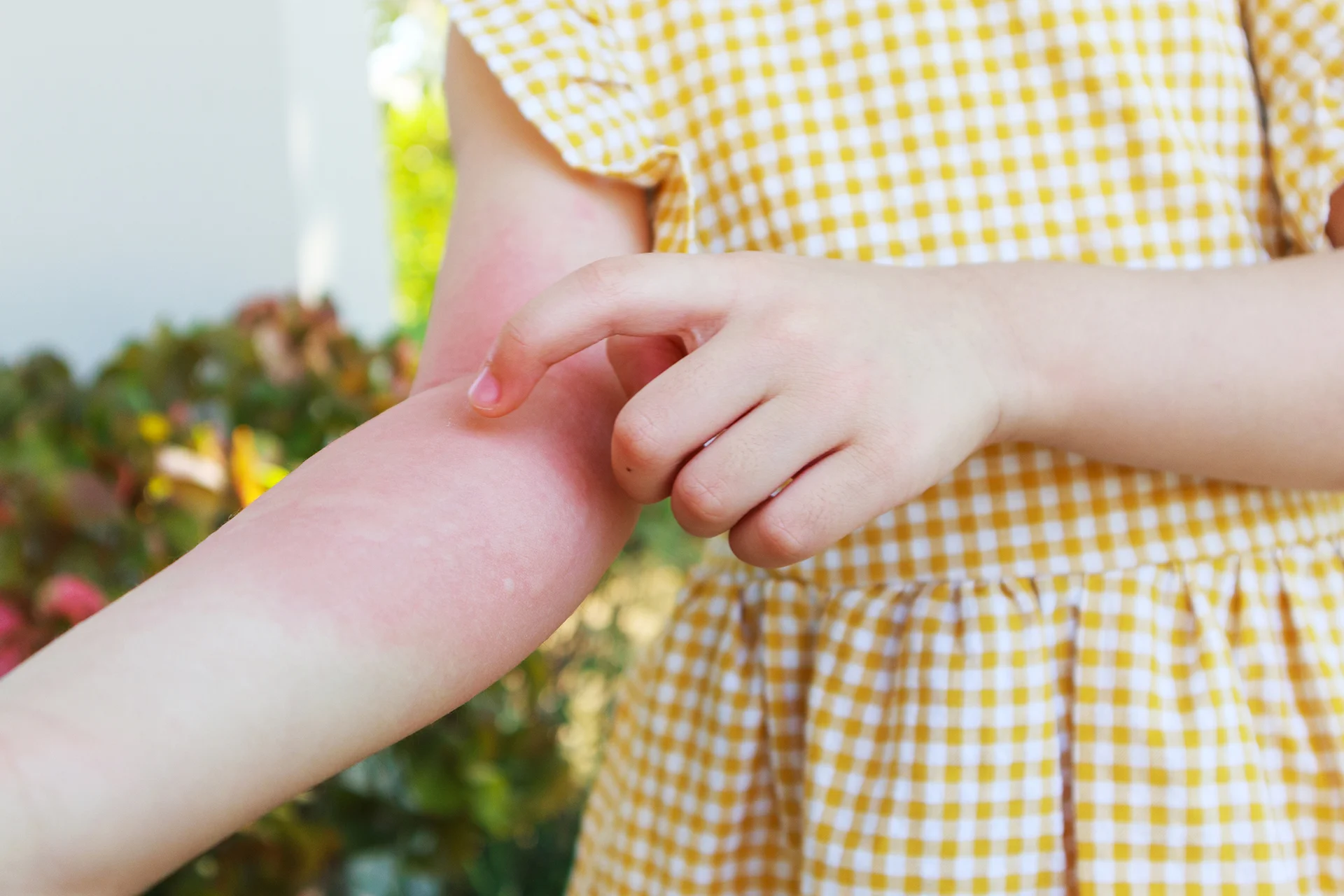Navigating Histamine Intolerance and Finding Relief for Your Child’s Discomfort
Have you noticed your child reacting strangely to certain foods or struggling with stomach discomfort and itchy, irritated skin lately?
While there could be several reasons, one possibility is that they may have histamine intolerance, an underrecognized condition that can cause allergic-like reactions to high-histamine foods.
Histamine intolerance, also known as histamine malabsorption, refers to an inability to properly break down histamines in foods. For some people, especially children, this can lead to unpleasant symptoms whenever histamine is consumed. While true food allergies involve the immune system, histamine intolerance is due to a lack of enzymes needed to metabolize histamines, resulting in a sensitivity rather than an allergy.
Symptoms of high histamine or histamine intolerance include abdominal pain, bloating, diarrhea, constipation, itchy skin, rashes, hives, and even anaphylaxis in severe cases. The symptoms are often confused for lactose intolerance or other sensitivities but tend to appear shortly after eating foods high in histamines like dairy, eggs, nuts, fresh fruit, wine, aged cheeses, smoked/cured meats, and pickled foods.
Histamine intolerance is different from a food allergy and requires a tailored treatment approach focused on reducing histamine loads rather than strictly eliminating problem foods. The good news is, dietary changes and supplements like diamine oxidase can help relieve your child’s discomfort. By understanding histamine intolerance, you’ll be better equipped to soothe their symptoms and support their health and development.
Histamine Metabolism and Diamine Oxidase
Histamine intolerance occurs when your body can’t properly break down the histamines in foods. The main enzyme responsible for metabolizing histamines is called diamine oxidase or DAO. DAO helps convert histamines into harmless byproducts that are excreted from the body.
DAO is vitally important for balancing histamine levels and regulating inflammatory responses. When DAO activity is low, excess histamines circulate in the bloodstream, triggering unpleasant symptoms. Several factors can influence your child’s DAO levels, including:
- Dietary intake of histamines: Eating more histamine-rich foods means DAO has to work harder to break them down, which can deplete enzyme stores.
- Gut health: An unhealthy gut microbiome is less able to support enzyme production and activity. Probiotics can help boost DAO.
- Nutritional deficiencies: Lacking certain nutrients like zinc, vitamin C, and copper prevents the body from producing adequate DAO. Supplements may be needed to replenish these cofactors.
- Medications: Some antibiotics, pain relievers, and other drugs can decrease DAO levels or activity. Discuss any medications your child takes with their pediatrician.
- Genetics: Some children are born with lower DAO activity or production due to genetic factors. This makes managing histamine intake especially important.
Balancing histamine consumption with available DAO is key to preventing discomfort and avoiding excess inflammation in children. Measuring histamine levels, tracking symptoms, and supplementing with DAO or cofactors as needed can help get levels in the right range for your child’s unique needs.
Potential Causes of Histamine Intolerance in Children
While histamine intolerance can develop at any time, some children are at a higher risk due to genetic or medical factors. Certain genes are involved in producing and activating the DAO enzyme, and variants of these genes may lead to lower DAO activity, especially in infants and toddlers.
Underlying conditions like celiac disease, Crohn’s disease, ulcerative colitis, and other forms of inflammatory bowel disease also compromise the gut and histamine metabolism. Digestive problems make it difficult for the body to break down histamines properly.
Eating a diet high in histamines, especially at a young age, strains the limited DAO supply and can overwhelm the ability to metabolize these compounds. Food-derived histamine intolerance refers to symptoms arising from consuming excess histamines through foods. Some histamine-rich culprits for kids include:
- Sausages, cured meats, bacon, and anchovies: High in histamines that promote inflammation.
- Pickled foods: Pickling vegetables, fish, eggs, etc. produces histamines.
- Fermented foods: While probiotics are good, other fermented foods contain histamines.
- Aged cheeses, sour cream, and yogurt: Histamine levels increase as cheese ripens and dairy products ferment.
- Nuts, seeds, and nut butters: Tahini, almond butter, peanut butter, etc. contain trace histamines.
- Dried fruits: Raisins, prunes, apricots, etc. have more histamines than fresh fruit.
- Alcoholic drinks: Wine, beer, cider, etc. are major sources of histamines.
The amount and frequency of histamine ingestion plays a critical role in causing problems. By determining potential causes of histamine intolerance in children and addressing diet, medical issues, and genetic vulnerabilities, you can help relieve their discomfort and support their health and development.
Identifying and Managing Histamine Intolerance in Children

Common symptoms of histamine intolerance in children include digestive issues like abdominal pain, bloating, diarrhea, constipation, as well as skin conditions such as rashes, hives, itching, and eczema. If you notice these symptoms in your child after eating certain foods, they may have histamine intolerance.
To properly diagnose histamine intolerance, consulting a pediatrician or gastroenterologist who can evaluate your child’s medical history, symptoms, diet, and stool or blood tests is important. An elimination diet may be recommended, where suspected trigger foods are removed one by one to determine a reaction. Other tests like DAO activity or urine histamines can also provide clues.
An easy diagnostic algorithm for kids includes:
- Identify concerning symptoms (digestive/skin issues).
- Note any reactions to high-histamine foods.
- Try an elimination diet removing suspected triggers.
- Consider DAO activity test if symptoms improve with diet changes.
- Monitor closely and revise diet/treatment based on symptoms and testing results.
Managing histamine intolerance requires a multifaceted approach tailored to your child’s unique needs. Dietary adjustments, including reducing histamine intake and supplementing with certain nutrients, can help relieve symptoms and achieve balance.
Dietary Approaches
- Follow a low-histamine diet with fresh fruits/vegetables, lean proteins, whole grains. Avoid citrus, aged cheeses, cured meats, nuts, seeds, eggs, and artificial additives.
- Give vitamin B6 which supports histamine metabolism. Vitamin C also helps.
- Use digestive enzymes or probiotics to improve gut health and DAO support.
- Supplement with diamine oxidase (DAO) or say goodbye to histamines to help break down excess histamines. But check with the doctor first on appropriate dosage for age.
- Gradually reintroduce foods to determine tolerance while monitoring symptoms. Diet revisions may be needed over time.
Other treatments may include medications, supplements, or therapy options as recommended by your child’s doctor. The most important steps are maintaining a healthy gut, balancing histamine intake with enzymatic ability, managing inflammation, and providing relief through the approach that works best for your child.
Diamine Oxidase Supplements and Other Treatment Options
Diamine oxidase or DAO supplements can help increase enzyme activity and improve histamine metabolism in children with low DAO. Products designed specifically for histamine intolerance include:
- Histamine Block or Diamine Oxidase: Supplies extra DAO enzyme to break down excess histamines. Must be taken with or after meals containing histamines.
- Histamine Digest: Provides betaine HCL and DAO for better digesting histamines and improving stomach acid. Can help with absorption of DAO and nutrients.
While DAO supplements may help relieve symptoms, especially in those with severe deficiencies, safety and appropriate dosage for children is essential to consider.
You should always consult your pediatrician before giving any supplements to ensure there are no negative interactions or side effects. DAO supplements may cause diarrhea, rashes, headaches or dizziness in high amounts or when not needed.
Additional treatment options for kids include digestive enzymes, lifestyle changes, and nutritional support:
- Digestive enzymes: Provide extra enzymes like bromelain, betaine HCL, papain to improve digestion and histamine breakdown. But check with the doctor first before use and possible side effects.
- Lifestyle changes: Reducing stress, staying hydrated, getting enough sleep and exercise can help boost health and support digestion. Limiting screen time and maintaining a routine also helps.
- Lifestyle changes: Reducing stress, staying hydrated, getting enough sleep and exercise can help boost health and support digestion. Limiting screen time and maintaining a routine also helps.
Managing histamine intolerance often requires patience and persistence to find the right combination of approaches for your child. It’s a journey that may take time exploring diet changes, supplements, medications and other treatments to achieve full symptom relief and balance. But with consistent effort, even the most sensitive children can optimize their health and thrive.
Conclusion
You know your child best, so prioritizing their health, comfort, and well-being should always come first in managing histamine intolerance. Finding the right approach requires patience, persistence and working closely with healthcare professionals to determine the best diagnosis and treatment plan based on their unique needs.
Discover Supplements at SeeBeyond Shop
Ready to explore a range of high-quality supplements that may help support your child’s journey towards overcoming histamine intolerance? Visit our med spa-affiliated SeeBeyond Shop, where you’ll find a carefully selected collection of supplements tailored for various health needs.
Don’t forget to consult with your healthcare provider before introducing any new supplements into your child’s routine. Take the first step towards a more comfortable and balanced life for your child – Visit SeeBeyond Shop today!
